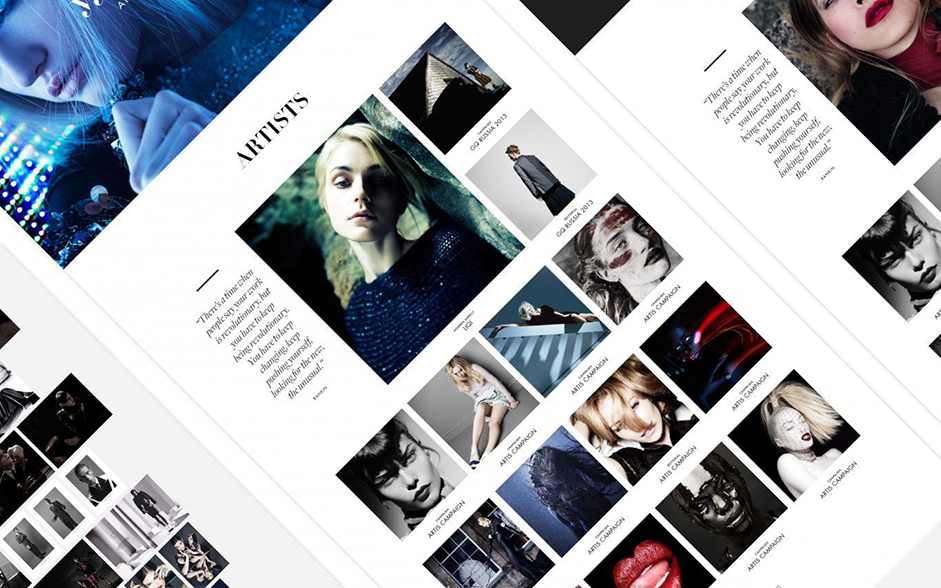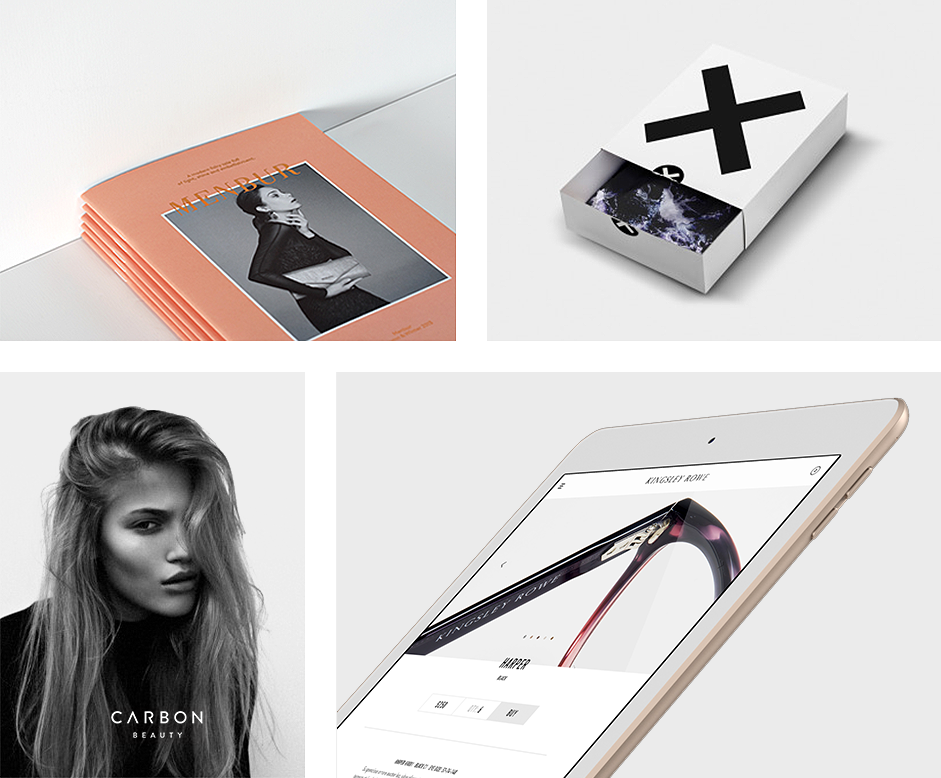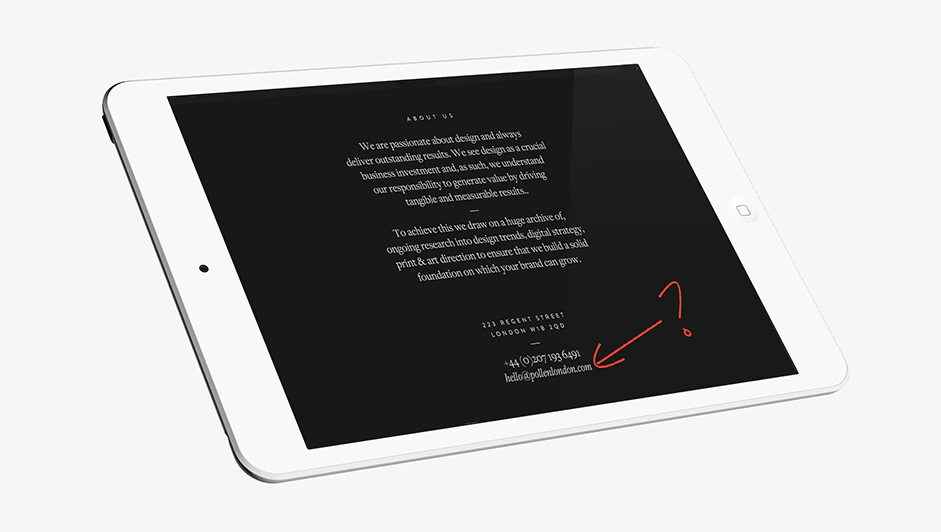Over the years I have received many thousands of CVs and emails enquiring about work, from designers of all levels, especially over the last ten years working as the Design Director @ Pollen London.
Despite the quantity of designers looking for work it always surprises me how often graduates, and even experienced designers, get this so unbelievably wrong that I catch myself wincing with pain.
For this reason I wanted to write down some simple and effective strategies for making a big impact and avoiding some common mistakes when you reach out to agencies for work, regardless of your level of experience.
1. Lose the CV

I can feel the ripples of dismay but I have some solid reasons for this. Try to bear in mind that your lovingly crafted email will arrive in an crowed inbox amongst several others with subjects like ‘URGENT: Pre-Launch Design Changes!!’ and ‘Your apartment is on fire!’.
Even if the Creative Director receiving your email just came back from a two week yoga retreat in Bali and has no active projects, they will still give your email about five seconds of their time, so you have to grab their attention and fill their eyes with visual awesomeness as quickly as possible. This is crucial!
Most designers tend to use this format…
- 1. Long, impersonal cover email
- 2. Attachment: CV — often designed in Word (which is astonishing!)
- 3. Link to portfolio site / Behance profile
I would suggest this format…
- 1. Short, personal cover email
- 2. Link to blog (more on this below)
- 3. Attachment: Folio PDF
Why a PDF? Yes, I know it's not 1998 and there are some great platforms for making a folio site but there are several powerful advantages to this. Firstly, a PDF is ‘physically’ in your inbox, so it’s much more tempting to open it. Secondly, unlike a website, most people will scan a whole PDF. Instead of getting put off by your website, which is probably badly designed and slow; because it’s a Frankenstein’s monster of WordPress themes or your first attempt at HTML, CSS & Javascript, creative directors will quickly get a sense of your folio without leaving Mail.
In other words, by making a 10–15 page landscape format PDF with a clean, editorial grid and dedicating one or two pages to each case study, you can show your work quickly and efficiently, much faster than you could ever do on your website even if it's awesome, which it probably isn’t.
If you add a page at the back of your PDF with some background information, effectively a summary of your long, boring CV reworked into a few short paragraphs, I will personally buy you a beer if anyone ever then asks you to send them your CV.
If you’re still not convinced do this quick calculation…
Scenario One
+ Reading Cover email + Opening and reading CV + Opening your parallax UX nightmare folio site (which, by the way, brings up the twelve other tabs related to whatever they were working on before they opened your email) + Opening and then scrolling through each case study = Way too much time!
Scenario Two
Reading cover email + Opening PDF = Not that much time at all.
Et voilà !
2. Make a blog

As well as being a great opportunity to do some broad agency research, which you’re probably already doing if you’re looking for a job, collating your own references in one place can have a really big impact on creative directors, who are, by definition, very sensitive to good design.
Your blog can be a lot sexier than your portfolio because it shows the work that you aspire to do, unconstrained —in addition to the work you happen to have done.
To put this in context, five years ago a very talented Romanian designer sent me an email with a fairly good portfolio and an awesome blog. There was so much work that I loved in his selection, plus a lot of references I had never seen before. Bogdan Stetco started work with us the next day on a freelance project and he has been a senior designer at Pollen now for over five years. He is now a partner and a close friend.
Another Belgian designer recently got in touch with a good folio site and a link to the blog she had started after graduating, where she had collated references on design, illustration & art direction, mainly in the fashion industry. The blog made a big difference because it helped us to close 'the imagination gap' between her unusually good graduate portfolio and the even higher standard we would expect on client projects & collaborations.
3. Get the tone right
Most emails from designers are obviously cut and pasted and sent to every design agency ever featured on an awards site. To make sure that you are showing genuine interest, rather than just spread betting, flattery will get you everywhere!
It really only takes a few minutes to look at an agencies website and be able to say something on the lines of “Hello, I really like the work you have done for x, y and z and would love the opportunity to work within the agency / I feel that I would be a good fit / I’m confident I could bring real value to your team… etc.” Keep in mind that the same team you are emailing have been emotionally engaged with those projects for several months so positive feedback will always be well received and will probably be seen as a sign of good taste.
Another approach is to make the work the impetus for getting in touch, something along the lines of: “I wanted to get in touch because I have always followed and appreciated [agency name]’s work”. Of course there are a hundred variations on this theme but the general rule is: make it personal and keep it informal.
4. Choose your target

To maximise your chance of getting a call, or at least a meaningful reply, your email needs to hit the inbox of someone in the senior creative team.
In a small, highly creative agency the directors are the senior creatives and are likely to receive emails sent to the info@ or hello@ contact address listed on the site. However, the bigger the agency gets (above five or six people) the more likely it is that your email will land in the inbox of the new business team, so your folio may never get seen by a designer.
If you suspect you are writing to a fairly big agency then you need to make sure your email gets to the right person so check the website and, if you have to call to ask for the Creative Director’s email, keep that call very short & sweet. If you miscalculate and the person answering is one of the directors or lead designers they will almost certainly be in the middle of something.
I have received lots of disruptive calls from graduates giving painfully slow and vague introductions to themselves when we're in 6th gear preparing for a big presentation. Trust me, it’s annoying.
So that’s it! If you’re a graduate or designer looking for work and want more advice feel free to leave a comment or email me: barny@pollenlondon.com.
